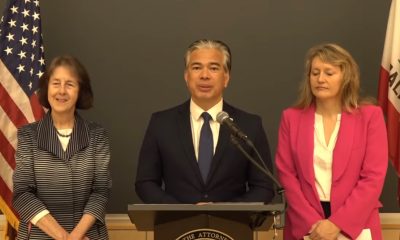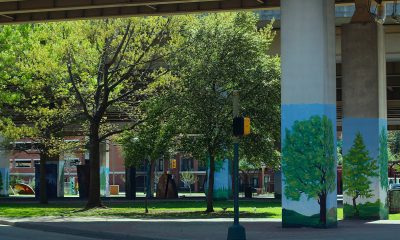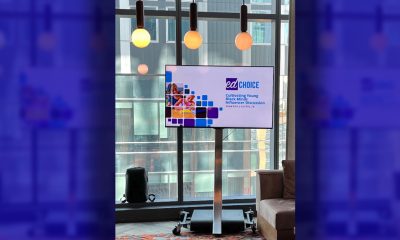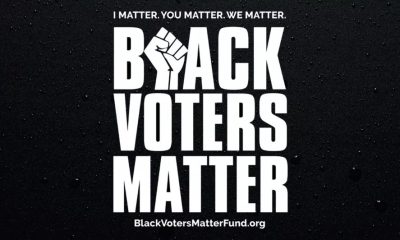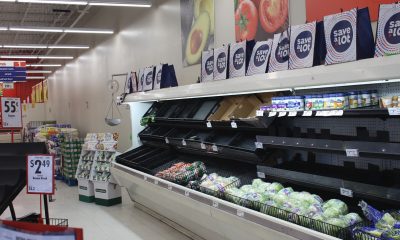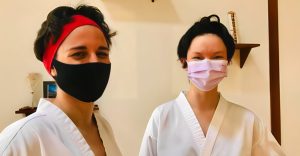#NNPA BlackPress
Chief Hall: Citizens, Clergy, elected officials Rally in support after groups give no confidence vote
NNPA NEWSWIRE — T.C. Broadnax is the Dallas city manager. He has the support of the incoming Mayor and a majority of the city council. He said as long as he is the city manager, Chief Hall will be the Police Chief. Simply put, regardless of outside noise, only the council can fire the city manager and only the city manager can fire the police chief.
By Staff Reporter, Texas Metro News Writer
From Staff Reports in response to a press conference where Dallas Police Chief U. Renee Hall was given a vote of no confidence, the first African American woman to serve in that post received overwhelming support that included statements from Dallas City Manager T.C. Broadnax, Dallas City Mayor Pro Tem Casey Thomas, Next Generation Action Network’s (NGAN) Min. Dominique Alexander, members of the clergy and community-based groups.
Citing several instances where they felt Chief Hall was not supportive, members of the National Latino Law Enforcement Organization (NLLEO) called for her firing. Dallas Chapter President George Aranda said, “We need a new crime fighter here. She fails to listen to our rank and file. She doesn’t want to take any advice from the organizations. We’re the pulse of the police department.” The other police groups have not joined in the call for a replacement and City Manager Broadnax is not bowing to the pressure.
“I am confident that Chief Hall and the dedicated officers of the Dallas Police Department are focused and committed to ensuring that the safety of our residents is a top priority,” said Mr. Broadnax, who has the authority to hire and fire the chief. “Chief Hall’s strategic approach to restructuring DPD has helped maximize resources and align the department to be more responsive to the needs of our community. Through her leadership, Chief Hall has worked to improve efficiencies within the department, provide high quality service to every Dallas resident, enhance the department’s community engagement and outreach efforts, and address crime more proactively.”
 Mr. Broadnax added that the Chief has his “support and full confidence in her ability to continue leading the department.” In response to NLLEO, Mr. Thomas said, “Let me put some things in context. First, the city manager hires and fires the Police Chief. The Mayor and City Council hires the city manager. Unless there are at least eight members of the city council who decide to fire the city manager, the city manager is safe.
Mr. Broadnax added that the Chief has his “support and full confidence in her ability to continue leading the department.” In response to NLLEO, Mr. Thomas said, “Let me put some things in context. First, the city manager hires and fires the Police Chief. The Mayor and City Council hires the city manager. Unless there are at least eight members of the city council who decide to fire the city manager, the city manager is safe.
T.C. Broadnax is the Dallas city manager. He has the support of the incoming Mayor and a majority of the city council. He said as long as he is the city manager, Chief Hall will be the Police Chief. Simply put, regardless of outside noise, only the council can fire the city manager and only the city manager can fire the police chief.
Chief Hall is not in danger of being fired and she has my full support.” Min. Alexander, who was mentioned in the press conference, issued a public statement and held a press conference where he reiterated support for the Chief:
“NGAN Leadership wants the public to know that the community stands behind Chief Hall. In her short time as police chief she has done so much.” Further support of the Chief came from the African American Pastors Coalition: “The African American Pastors Coalition stands in support of Chief Hall. We urge all citizens of the City of Dallas to join us in a unified effort to support her continued leadership of the Dallas Police Department. She has made prominent steps to transform the department to reflect 21st Century Policing. Chief Hall has prioritized community engagement and outreach by connecting with officers in the field, meeting with Dallas community groups, professional leaders and local organizers.
Under Chief Hall’s leadership, the department has implemented 5 strategic priorities: crime reduction, increased recruitment, advanced officer development, improved organizational effectiveness, and enhanced community relationships. In addition, Chief Hall has engaged the school districts and local colleges to generate a student pipeline and internship program. She has increased internal accessibility to her office and has overseen several General Order and policy changes within the department.”
Councilmember B. Adam McGough, Chairman of the Public Safety and Criminal Justice Committee, releases the following statement: “Throughout my tenure, I have fought hard to support our police officers. The daily sacrifices they make are undeniable, and the challenges they currently face are without question. I will continue to ask questions and urge Chief Hall to provide strategic solutions and measurable outcomes to reduce crime across our city and to give our officers the support they have rightfully earned. Healthy government must allow us to be critical and challenge ideas so that progress can occur, and we need strong leadership in our police department with transparent and objective performance measures. I do not support calling for Chief Hall’s removal. Dallas, now more than ever, must come together in unity and strength. A leadership transition of this magnitude puts everyone at greater risk. The safety of our neighbors and our community must come first. The City of Dallas will not tolerate crime, and we will work together to make our neighborhoods safe.”
While Chief Hall has not responded to the NLLEO, in attendance at the Women’s Leadership Summit, hosted by former State Rep. Helen Giddings, she did ask for prayers, and had no problem with securing prayer warriors in the room.
#NNPA BlackPress
IN MEMORIAM: Ramona Edelin, Influential Activist and Education Advocate, Dies at 78
NNPA NEWSWIRE — Born on September 4, 1945, in Los Angeles, California, activist Ramona Edelin’s early years were marked by a commitment to education and social justice. According to her HistoryMakers biography, after graduating from Fisk University with a Bachelor’s degree in 1967, she pursued further studies at the University of East Anglia in England. She earned her master’s degree before completing her Ph.D. at Boston University in 1981.
The post IN MEMORIAM: Ramona Edelin, Influential Activist and Education Advocate, Dies at 78 first appeared on BlackPressUSA.

By Stacy M. Brown, NNPA Newswire Senior National Correspondent
@StacyBrownMedia
Once upon a time, Black Americans were simply known as colored people, or Negroes. That is until Ramona Edelin came along. The activist, renowned for her pivotal roles in advancing civil rights, education reform, and community empowerment, died at her D.C. residence last month at the age of 78. Her death, finally confirmed this week by Barnaby Towns, a communications strategist who collaborated with Dr. Edelin, was attributed to cancer.
Born on September 4, 1945, in Los Angeles, California, Edelin’s early years were marked by a commitment to education and social justice. According to her HistoryMakers biography, after graduating from Fisk University with a Bachelor’s degree in 1967, she pursued further studies at the University of East Anglia in England. She earned her master’s degree before completing her Ph.D. at Boston University in 1981.
Edelin’s contributions to academia and activism were manifold. She was pivotal in popularizing the term “African American” alongside Rev. Jesse L. Jackson in the late 1980s.
Jackson had announced the preference for “African American,” speaking for summit organizers that included Dr. Edelin. “Just as we were called Colored, but were not that, and then Negro, but not that, to be called Black is just as baseless,” he said, adding that “African American” “has cultural integrity” and “puts us in our proper historical context.”
Later, Edelin told Ebony magazine, “Calling ourselves African Americans is the first step in the cultural offensive,” while linking the name change to a “cultural renaissance” in which Black Americans reconnected with their history and heritage.
“Who are we if we don’t acknowledge our motherland?” she asked later. “When a child in a ghetto calls himself African American, immediately he’s international. You’ve taken him from the ghetto and put him on the globe.”
The HistoryMakers bio noted that Edelin’s academic pursuits led her to found and chair the Department of African American Studies at Northeastern University, where she established herself as a leading voice.
Transitioning from academia to advocacy, Edelin joined the National Urban Coalition in 1977, eventually ascending to president and CEO. During her tenure, she spearheaded initiatives such as the “Say Yes to a Youngster’s Future” program, which provided crucial support in math, science, and technology to youth and teachers of color in urban areas. Her biography noted that Edelin’s efforts extended nationwide through partnerships with organizations like the National Science Foundation and the United States Department of Education.
President Bill Clinton recognized Edelin’s expertise by appointing her to the Presidential Board on Historically Black Colleges and Universities in 1998. She also co-founded and served as treasurer of the Black Leadership Forum, solidifying her standing as a respected leader in African American communities.
Beyond her professional achievements, Edelin dedicated herself to numerous boards and committees, including chairing the District of Columbia Educational Goals 2000 Panel and contributing to the Federal Advisory Committee for the Black Community Crusade for Children.
Throughout her life, Edelin received widespread recognition for her contributions. Ebony magazine honored her as one of the 100 Most Influential Black Americans, and she received prestigious awards such as the Southern Christian Leadership Award for Progressive Leadership and the IBM Community Executive Program Award.
The post IN MEMORIAM: Ramona Edelin, Influential Activist and Education Advocate, Dies at 78 first appeared on BlackPressUSA.
#NNPA BlackPress
Tennessee State University Board Disbanded by MAGA Loyalists as Assault on DE&I Continues
NNPA NEWSWIRE — Recent legislative actions in Tennessee, such as repealing police reform measures enacted after the killing of Tyre Nichols, underscore a troubling trend of undermining local control and perpetuating racist agendas. The new law preventing local governments from restricting police officers’ authority disregards community efforts to address systemic issues of police violence and racial profiling.
The post Tennessee State University Board Disbanded by MAGA Loyalists as Assault on DE&I Continues first appeared on BlackPressUSA.
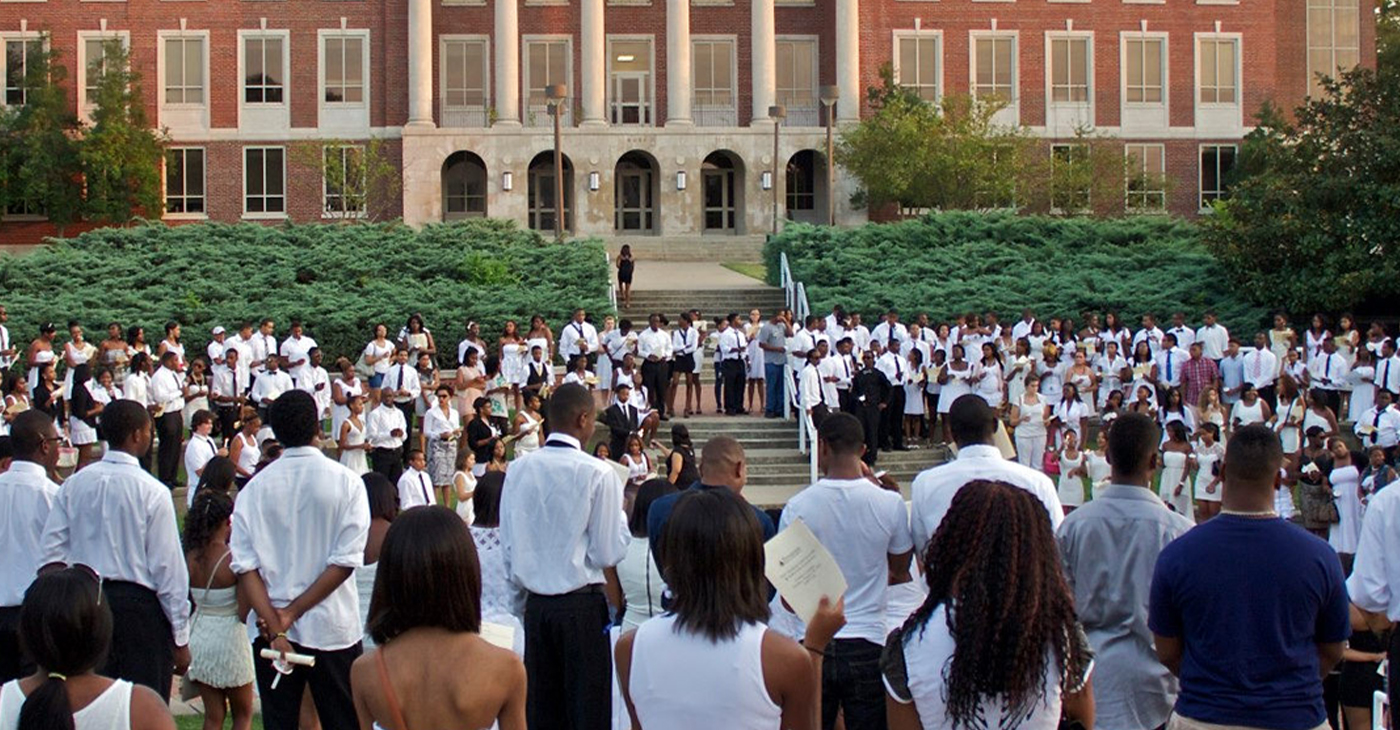
By Stacy M. Brown, NNPA Newswire Senior National Correspondent
@StacyBrownMedia
Tennessee State University (TSU), the state’s only public historically Black college and university (HBCU), faces a tumultuous future as Gov. Bill Lee dissolved its board, a move supported by racist conservatives and MAGA Republicans in the Tennessee General Assembly, who follow the lead of the twice-impeached, four-times indicted, alleged sexual predator former President Donald Trump. Educators and others have denounced the move as an attack on diversity, equity, and inclusion (DE&I) and a grave setback for higher education.
Critics argue that TSU’s purported financial mismanagement is a manufactured crisis rooted in decades of underinvestment by the state government. They’ve noted that it continues a trend by conservatives and the racist MAGA movement to eliminate opportunities for Blacks in education, corporate America, and the public sector.
Gevin Reynolds, a former speechwriter for Vice President Kamala Harris, emphasizes in an op-ed that TSU’s financial difficulties are not the result of university leadership because a recent audit found no evidence of fraud or malfeasance.
Reynolds noted that the disbanding of TSU’s board is not an isolated incident but part of a broader assault on DE&I initiatives nationwide. Ten states, including Tennessee, have enacted laws banning DE&I policies on college campuses, while governors appointing MAGA loyalists to university trustee positions further undermine efforts to promote inclusivity and equality.
Moreover, recent legislative actions in Tennessee, such as repealing police reform measures enacted after the killing of Tyre Nichols, underscore a troubling trend of undermining local control and perpetuating racist agendas. The new law preventing local governments from restricting police officers’ authority disregards community efforts to address systemic issues of police violence and racial profiling.
The actions echo historical efforts to suppress Black progress, reminiscent of the violent backlash against gains made during the Reconstruction era. President Joe Biden warned during an appearance in New York last month that Trump desires to bring the nation back to the 18th and 19th centuries – in other words, to see, among other things, African Americans back in the chains of slavery, women subservient to men without any say over their bodies, and all voting rights restricted to white men.
The parallels are stark, with white supremacist ideologies used to justify attacks on Black institutions and disenfranchise marginalized communities, Reynolds argued.
In response to these challenges, advocates stress the urgency of collective action to defend democracy and combat systemic racism. Understanding that attacks on institutions like TSU are symptomatic of broader threats to democratic norms, they call for increased civic engagement and voting at all levels of government.
The actions of people dedicated to upholding the principles of inclusivity, equity, and justice for all will determine the outcome of the ongoing fight for democracy, Reynolds noted. “We are in a war for our democracy, one whose outcome will be determined by every line on every ballot at every precinct,” he stated.
The post Tennessee State University Board Disbanded by MAGA Loyalists as Assault on DE&I Continues first appeared on BlackPressUSA.
#NNPA BlackPress
Braxton Haulcy and the Expansion of Walker|West Music Academy
May 24, 2023 – Walker West Music Academy gets an early start on expansion. Join us for a Wednesday episode of The …
The post Braxton Haulcy and the Expansion of Walker|West Music Academy first appeared on BlackPressUSA.

May 24, 2023 – Walker West Music Academy gets an early start on expansion. Join us for a Wednesday episode of The …
The post Braxton Haulcy and the Expansion of Walker|West Music Academy first appeared on BlackPressUSA.
-

 Activism4 weeks ago
Activism4 weeks agoOakland Post: Week of March 27 – April 2, 2024
-

 #NNPA BlackPress4 weeks ago
#NNPA BlackPress4 weeks agoCOMMENTARY: D.C. Crime Bill Fails to Address Root Causes of Violence and Incarceration
-

 #NNPA BlackPress4 weeks ago
#NNPA BlackPress4 weeks agoMayor, City Council President React to May 31 Closing of Birmingham-Southern College
-

 #NNPA BlackPress4 weeks ago
#NNPA BlackPress4 weeks agoBeloved Actor and Activist Louis Cameron Gossett Jr. Dies at 87
-

 Community1 week ago
Community1 week agoFinancial Assistance Bill for Descendants of Enslaved Persons to Help Them Purchase, Own, or Maintain a Home
-

 Activism3 weeks ago
Activism3 weeks agoOakland Post: Week of April 3 – 6, 2024
-

 Business1 week ago
Business1 week agoV.P. Kamala Harris: Americans With Criminal Records Will Soon Be Eligible for SBA Loans
-

 Activism2 weeks ago
Activism2 weeks agoOakland Post: Week of April 10 – 16, 2024

